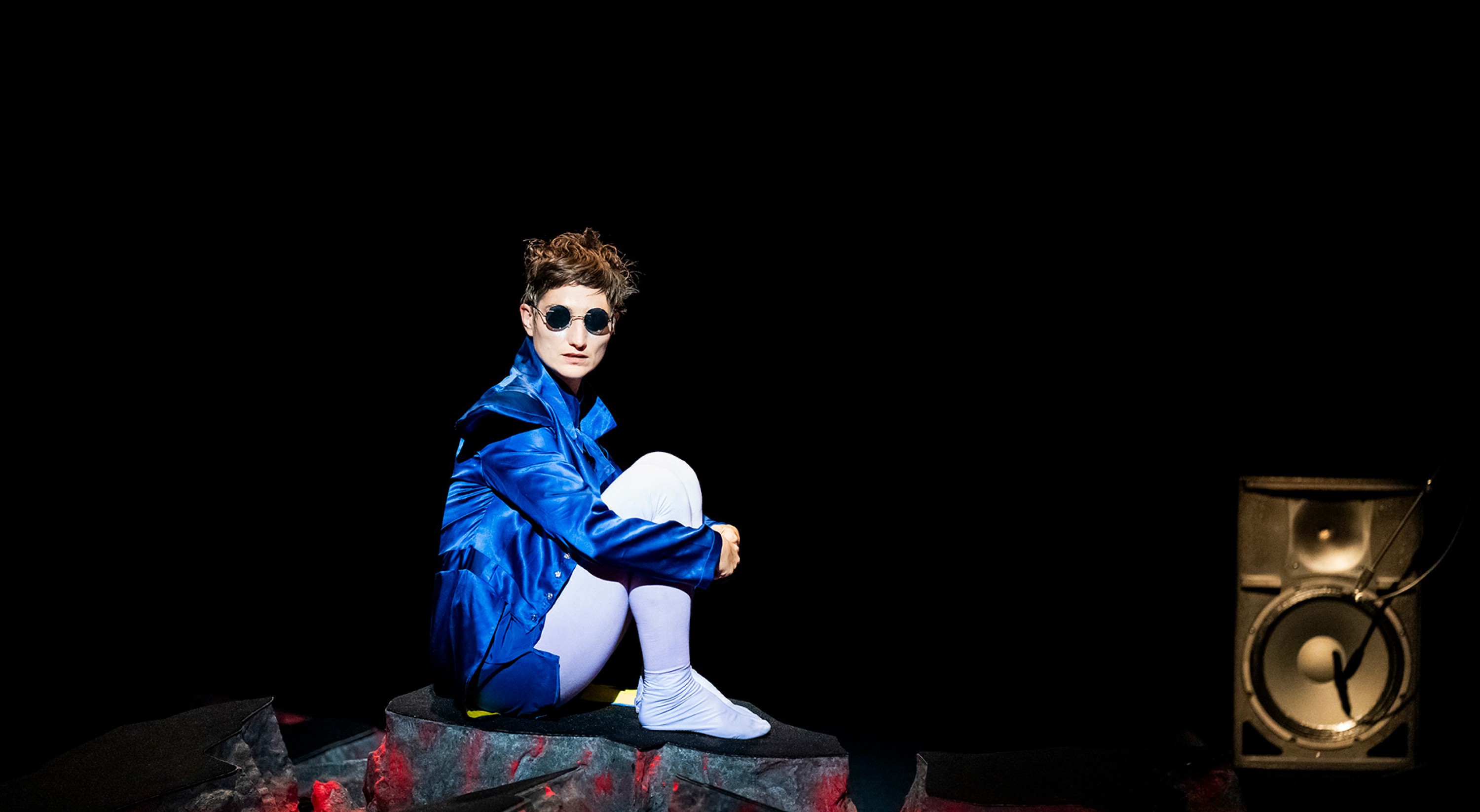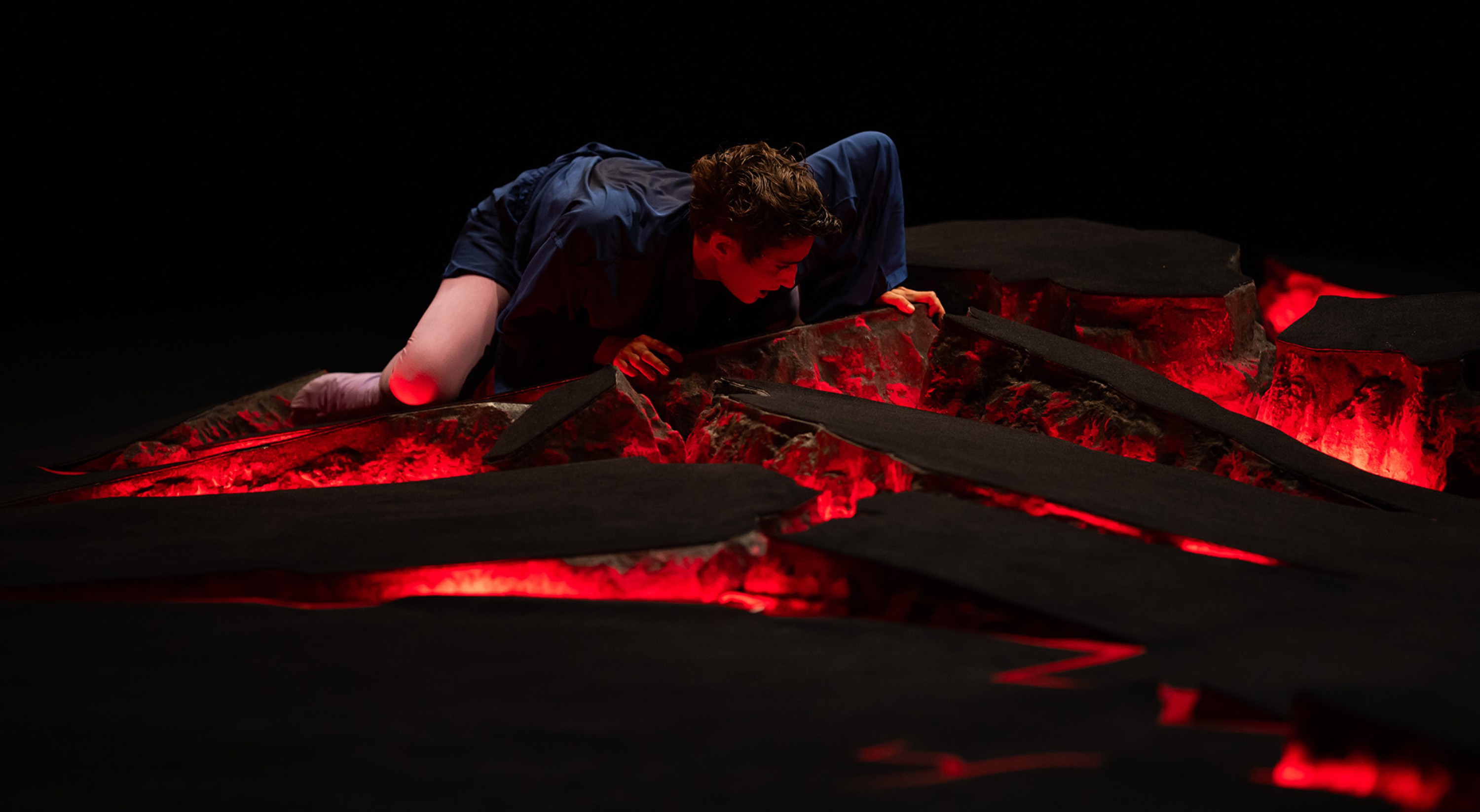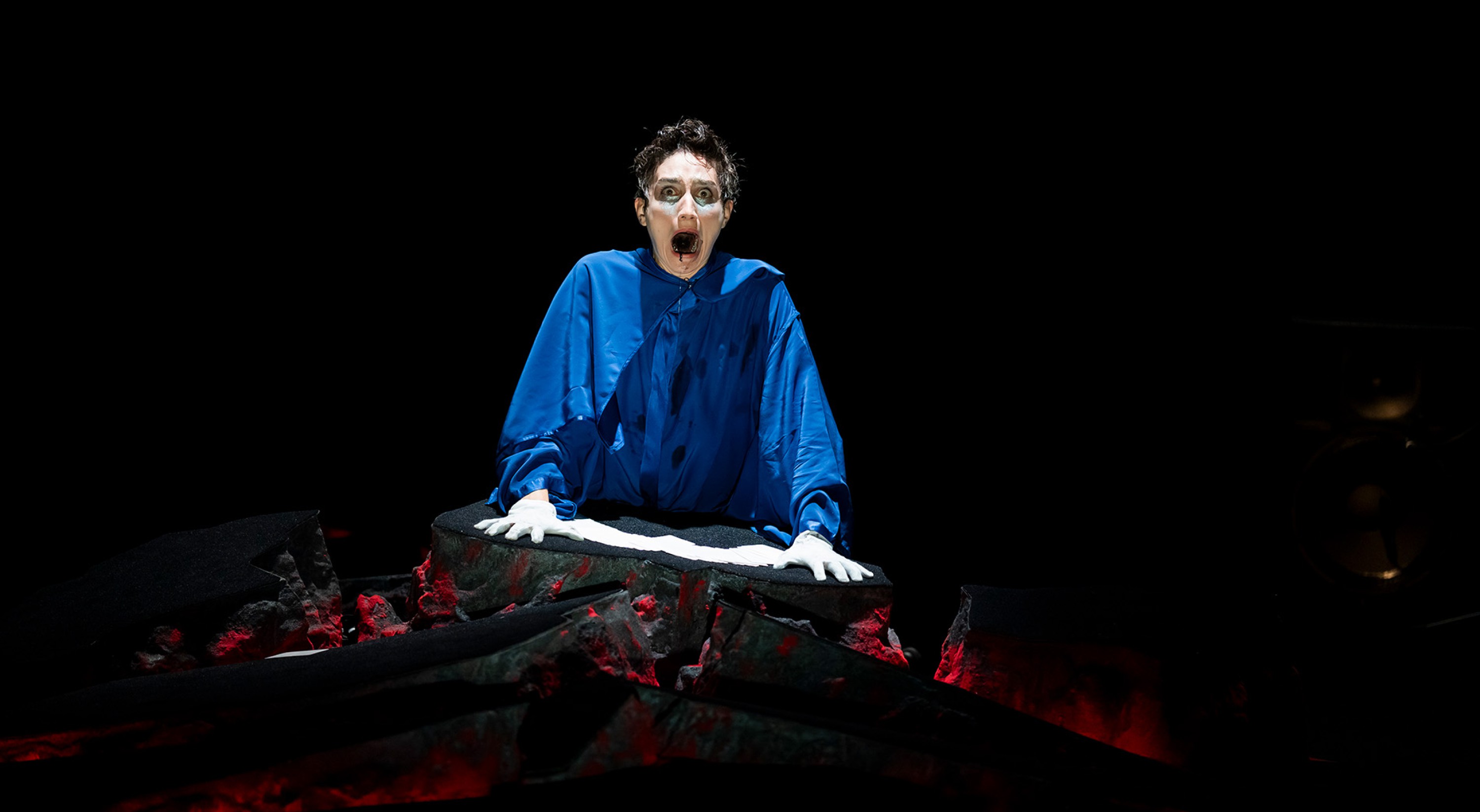Flora Détraz
HURLULA
octoberoct 11 – 13
A creation by Flora Détraz
Choreography and interpretation, Flora Détraz
Music, Lê Quan Ninh, Claire Mahieux and Flora Détraz
Percussion, Lê Quan Ninh
Feedback and sound design, Claire Mahieux
Set design, Nadia Lauro
Lighting design, Arthur Gueydan
Costume design, Flora Détraz and Nadia Lauro
Outside view, Agnès Potié
Stage manager, Tatiana Carret
Set design, Nadia Lauro, Marie Mareca, Nina Michel
Costume design, Chloé Courcelle
Acknowledgements, Théo Aucremanne
Videos
Direction and interpretation, Flora Détraz
Images, Vincent Bosc
Sound, Claire Mahieux
Artistic advisor, Justine Bougerol
Administration et production, Aoza production - Aline Berthou, Charlotte Bayle
Diffusion, Key Performance - Koenraad Vanhove
Production PLI
Partners, coproduction and residencies, Forecast - Skills e. V (Berlin); Maison de la Danse / Pôle européen de création and Biennale de la danse de Lyon 2023; Atelier de Paris / CDCN; Charleroi Danse - Centre chorégraphique de Wallonie-Bruxelles; PACT-Zoll-verein (Essen); Les Spectacles vivants - Centre Pompidou (Paris); Festival d'Automne à Paris ; LUX Scène nationale de Valence ; Centre Chorégraphique National de Caen Normandie – direction Alban Richard (accueil-studio / ministère de la Culture; Chorège I CDCN Falaise Normandie; A-CDCN (Les Hivernales - CDCN d'Avignon, La Manufacture - CDCN Nouvelle- Aquitaine Bordeaux - La Rochelle, L'échangeur - CDCN Hauts-de-France, Le Dancing CDCN Dijon Bourgogne-Franche-Comté, Chorège I CDCN Falaise Normandie, Le Pacifique - CDCN Grenoble - Auvergne - Rhône-Alpes, Touka Danses - CDCN Guyane, Atelier de Paris / CDCN, Le Gymnase CDCN Roubaix - Hauts-de-France, POLE- SUD CDCN / Strasbourg, La Place de la Danse - CDCN Toulouse / Occitanie, La Maison CDCN Uzès Gard Occitanie, la briqueterie CDCN du Val-de-Marne); Réseau R. O. M (Residencies On the Move) at La Balsamine (Brussels), in partnership with le joli collectif - Be, Fr; Teatro Viriato (Viseu); O espaço do tempo, Montemor-o-novo (Lisbon); Alkantara (Lisbon); MA scène nationale - Pays de Montbéliard ; Montpellier Danse within the framework of the residency at I'Agora, cité internationale de la danse, with the support of the BNP Paribas Foundation; Montevideo, Marseille; GMEM - center de création musicale (Marseille); Onda office national de diffusion artistique dans le cadre du dispositif Écran vivant; La Villa Albertine - Residence in New York, in partnership with the Institut français
The company PLI benefits from the support of the Drac Normandie / ministère de la Culture and the support of the structures and artists of the Normandy region
Les Spectacles vivants - Centre Pompidou (Paris) and the Festival d'Automne à Paris are co-producers of this show and present it in co-production
Both film and choreographed concert for a trio, human scream and animal scream, the HURLULA diptych uses the scream as its raw material. For the choreographer Flora Detraz, who has explored a wide range of screams and looked into this sound which we let out, these emotional outpourings have the capacity to transfigure our bodies.
Whether it be out of rage, joy, pleasure, fear or sadness, it is difficult to identify a scream just by listening to it. Rather than asking why we scream, Flora Detraz poses the following question: where does the scream come from? What effect does it have on the body? An investigation consisting of two sections, one stage-based and the other cinematographic, her latest piece takes an in-depth look at the act of screaming. Onstage, accompanied live with audio feedback swathes and percussion, the dancer sets up collisions between the sound-based nuances of the screams. She gives herself over to clamours which seem to arise from the depths of her soul. Onscreen, she takes her inspiration from the scream which bursts out when we find ourselves alone in a natural environment, and makes it dialogue with the surrounding vastness. In a forest or on the mountain, a character has its back to us, and round mirrors reflect fragments of bodies and gaping mouths, opening up other dimensions. HURLULA, a shortened form for the human scream and that of night birds, has a liberating drive which pushes us towards the outside, a world in which the invisible becomes visible.



